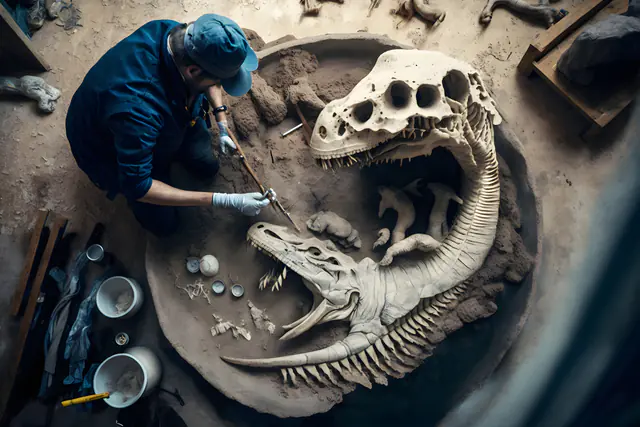Fossils of aquatic creature resemble mythical beast, Dinocephalosaurus orientalis, found in Guizhou province
In a groundbreaking discovery, scientists have unearthed fossils reminiscent of a mythical ‘Chinese dragon’, dating back a staggering 240 million years. The remarkable find, located in Guizhou province, Southern China, has unveiled the existence of a creature dubbed Dinocephalosaurus orientalis, boasting a distinctive 32-vertebrae neck.
Initially identified in 2003, advancements in technology and research methodologies have enabled researchers to delve deeper into the characteristics of this ancient aquatic species. With its peculiar features including ‘flippered limbs’ and well-preserved fish in its stomach region, the creature is believed to have thrived in an aquatic habitat.
Nick Fraser, Keeper of Natural Sciences at National Museums Scotland and a key figure in the research, described the Dinocephalosaurus orientalis as a “very strange animal”, emphasizing its striking resemblance to the mythical Chinese dragon. Fraser expressed confidence in the global fascination the discovery would evoke, owing to its extraordinary appearance and intriguing evolutionary lineage.
Comparisons drawn between Dinocephalosaurus orientalis and the Tanystropheus hydroides reveal similarities in their elongated necks, albeit with distinct differences. While both species hail from the Middle Triassic period, the former exhibits a more extensive vertebral structure, indicative of a longer body composition.
The international collaboration between researchers from Scotland, America, and Germany spanning a decade has shed light on the enigmatic fauna of the Triassic era. Professor Li Chun from the institute underscored the significance of this collaborative effort, highlighting the invaluable insights garnered from newly discovered specimens housed at the Chinese Academy of Sciences.
The findings detailing the discovery of Dinocephalosaurus orientalis have been published in the latest volume of the academic journal Earth And Environmental Science: Transactions Of The Royal Society Of Edinburgh, cementing its place in the annals of paleontological research.
As scientists continue to unravel the mysteries of prehistoric life, the revelation of Dinocephalosaurus orientalis adds another layer of complexity to our understanding of ancient ecosystems and the evolution of terrestrial and aquatic organisms.
